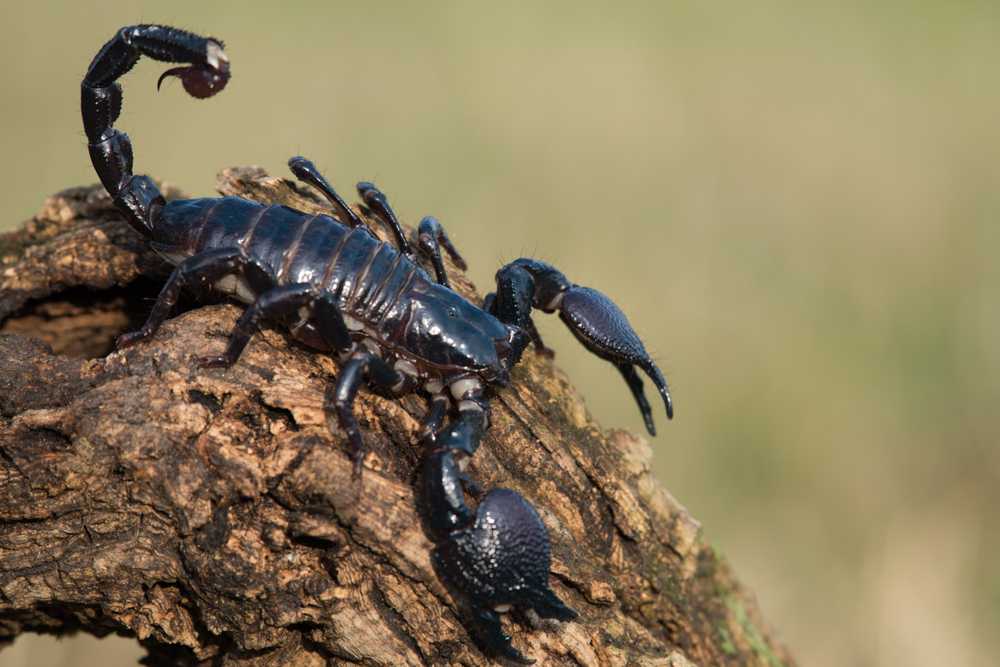Discover the Truth About the Biggest Scorpion in the World
The biggest arachnid of its kind on Earth is the Giant Forest Scorpion, scientifically known as Heterometrus swammerdami, reaching an impressive overall length of up to 23 centimeters (9 inches). Native to India and Sri Lanka’s rainforests, this arthropod is a natural marvel and holds the Guinness World Record for the largest living species. Explore its traits, ecological role, and comparisons with other large species worldwide.
- This scorpion thrives in India and Sri Lanka’s warm climates, growing to 23 centimeters with large pincers.
- Its venom is non-lethal to healthy adults and mainly subdues prey; it relies more on powerful pincers.
- Its habitat includes tropical rainforests, semi degraded termite mounds, tree holes, crab holes, and abandoned rat burrows, showcasing remarkable adaptability in diverse environments.
- Professional pest control services offer eco-friendly, effective solutions to manage populations while preserving ecological balance.
Meet the Giant Forest Scorpion
Standing as the world’s largest species of its kind, the Giant Forest Scorpion captivates both scientists and nature enthusiasts. Often mistaken for similar large species like the Emperor or Asian Forest Scorpion, it is distinguished by its sheer size and unique characteristics.
Physical Characteristics
The Giant Forest Scorpion can reach up to a length of 23 centimeters, with a large size complemented by a body color ranging from uniform reddish brown to deep reddish black. Juveniles are typically reddish with a yellow telson bulbous tail segment, which matures into a darker color in adults.
Its large pincers are strongly lobiform and completely covered with large rounded granulae, giving them a rugged and formidable appearance. The pedipalp patella lacks true carinae, and the carapace features a smooth disc with granulate margins and posterior portion, adding to its distinctive morphology. The pronounced internal tubercle further sets it apart from other species.
These physical traits not only aid in hunting but also serve as defensive tools against predators, highlighting the evolutionary adaptations of this creature.
Habitat and Distribution
This giant arachnid inhabits the tropical rainforests of India and Sri Lanka, preferring moderately warm climates that support its survival. It is commonly found inside degraded or semi-degraded termite mounds, tree holes, crab holes, and abandoned rat burrows in agricultural fields and forest floors.
Its ability to thrive in semi degraded habitats demonstrates ecological versatility, allowing it to adapt to changing environments. These habitats provide shelter and hunting grounds, supporting its nocturnal lifestyle.
Unique Sensory Adaptations
The Giant Forest Scorpion is equipped with specialized sensory hairs covering its body that detect minute vibrations and air currents. This sensory system allows it to effectively locate prey and avoid predators in the dense and dark rainforest floor, where visibility is limited. These adaptations make it a highly efficient nocturnal hunter.
Longevity and Molting
Unlike many insects, scorpions, including the Giant Forest Scorpion, can live several years, with some individuals reaching up to 6-8 years in captivity. They undergo multiple molts during their life cycle, shedding their exoskeleton to grow larger. This molting process is critical for their development and survival, especially in their early years.
Comparison with Other Large Species
The Giant Forest Scorpion is often compared to other large members like the Emperor (Pandinus imperator) and the Asian Forest Scorpion. Each species displays unique adaptations and ecological roles.
Emperor vs. Giant Forest Scorpion
The Emperor, native to West Africa, is known for its glossy black exoskeleton that glows under ultraviolet light—a feature absent in the Giant Forest Scorpion. The Emperor’s large pincers are more textured and bumpy, whereas the Giant Forest Scorpion’s are smoother but proportionally larger.
Behaviorally, the Emperor is docile and popular in the pet trade, while the Giant Forest Scorpion is more defensive and aggressive when threatened.
Asian Forest vs. Giant Forest Scorpion
The Asian Forest is smaller, measuring 3.5 to 6 inches, and has a black stinger compared to the amber or yellow telson of the Giant Forest. It is known for its quick temper and readiness to sting, contrasting with the generally more docile Giant Forest.
Venom and Behavior
The venom of the Giant Forest is largely identified as non-lethal to healthy adults, causing pain comparable to a bee sting. This mild venom is primarily used to immobilize prey rather than for defense.
Unlike the most venomous species, which can be deadly to humans, the Giant Forest’s venom is safer, reducing risks for humans living in proximity.
Predatory Behavior
Ecologically, its predatory strategy arguably evolved to rely more on its large pincers than venom. It is a nocturnal ambush predator, feeding on insects, spiders, lizards, and even other members of its order. Its large size and powerful pincers enable it to crush prey effectively.
While generally docile, the Giant Forest can exhibit fairly aggressive behavior when threatened. It raises its large pincers and arches its tail, signaling a defensive posture to deter predators.
Interestingly, the Giant Forest Scorpion can produce a hissing or rasping sound by rubbing parts of its body together, a behavior known as stridulation. This serves as a warning to potential predators, adding another layer to its defense mechanisms.
Ecology and Natural History
This species plays an important role in controlling insect populations, contributing to the ecological balance of its habitat. It also serves as prey for larger animals, integrating into the food web of tropical rainforests.
Reproduction occurs during the summer season when solitary individuals come together to mate. Females give birth to live young, which cling to their mother’s back until they mature, undergoing several molts before adulthood. Environmental factors influence development and survival rates.
Interaction with Humans
While encounters with humans are rare due to their nocturnal and reclusive nature, the Giant Forest Scorpion can occasionally wander into agricultural areas. Its mild venom means stings are painful but rarely dangerous, though caution is advised.
Professional Pest Control Services
Encountering the Giant Forest near human dwellings can be unsettling. Professional pest control services specialize in managing populations using eco-friendly methods that protect both humans and the environment. Comprehensive guides are available on how to identify and treat stings.
Eco-friendly Pest Management
These services utilize humane techniques, preserving beneficial wildlife while effectively controlling infestations. They address this species and other pests like termites and bedbugs, providing comprehensive protection for homes and businesses.
Fascinating Facts About the Biggest Species
- The Giant Forest’s body is completely covered with sensory hairs that detect vibrations, aiding in hunting and predator avoidance.
- Its large pincers can exert significant crushing force, an adaptation that arguably evolved to reduce reliance on venom.
- Despite its intimidating size, it is not the most venomous; species like the Deathstalker and Indian red scorpion hold that title.
- Its venom contains unique compounds studied by the Monell Chemical Senses Center and American Museum of Natural History for potential medical applications.
- It is known to inhabit inside degraded termite mounds and tree holes, showcasing remarkable habitat flexibility.
- The Giant Forest Scorpion has been featured in traditional medicine practices in parts of India, where it is sometimes used in remedies, although scientific backing is limited.
- Unlike many scorpions, it exhibits a relatively slow metabolism, enabling it to survive long periods without food.
Frequently Asked Questions
What is the difference between a giant forest and an emperor?
The giant forest typically has a black telson, while the emperor features an amber or yellow telson. Emperors have larger, bumpy claws, whereas giant forests have smoother, proportionally larger pincers.
What are the biggest in history?
The largest in history include extinct species like Pulmonoscorpius, which grew over 70 cm (28 inches), and giant sea scorpions (eurypterids) that reached lengths of more than 8 feet, dominating prehistoric seas.
What kills the most humans?
The bark is the most lethal to humans, especially in Arizona. The Indian red and Deathstalker are also among the most venomous and dangerous.
What is the world’s largest?
The world’s largest is the Giant Forest (Heterometrus swammerdami), reaching up to 23 centimeters (9 inches) in length.
What makes the Giant Forest the largest species?
Its large size, robust body, and impressive overall length distinguish it from other species, earning it the title of the biggest in the world.




